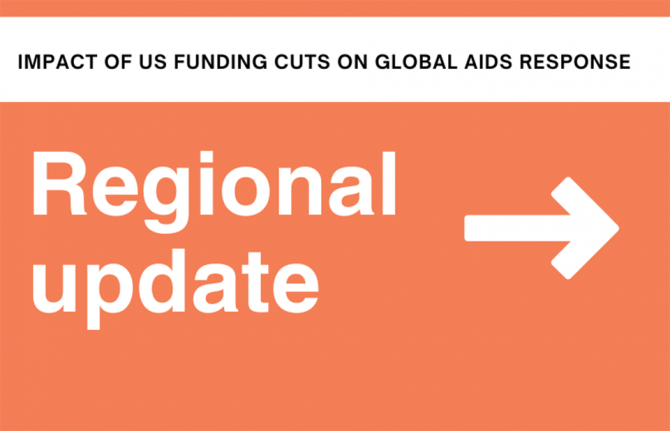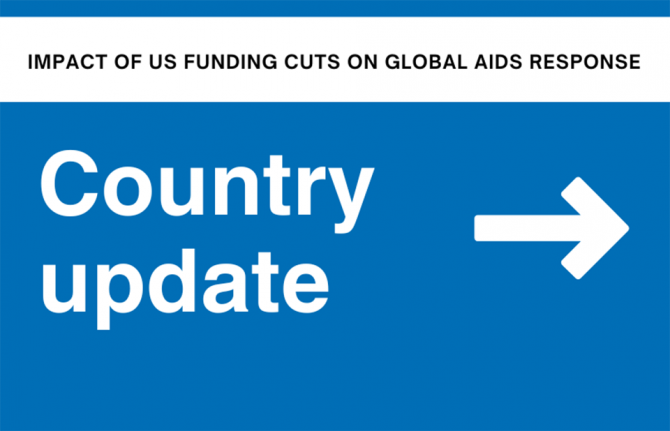
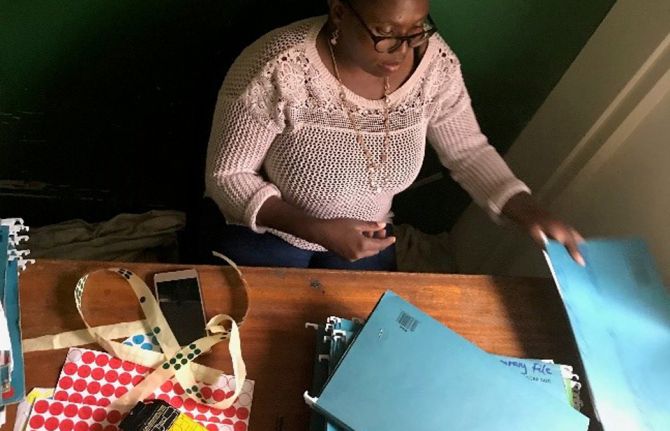
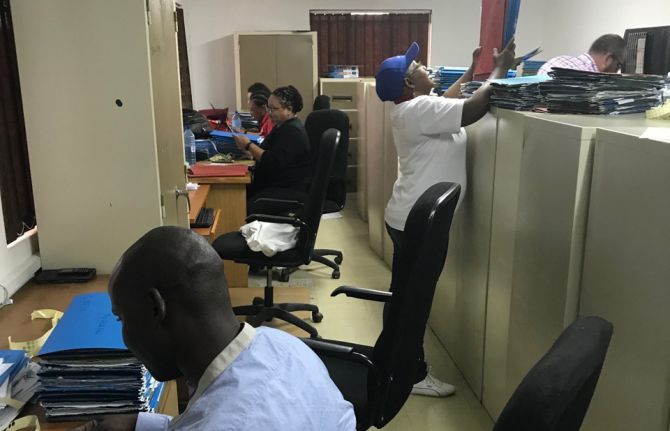
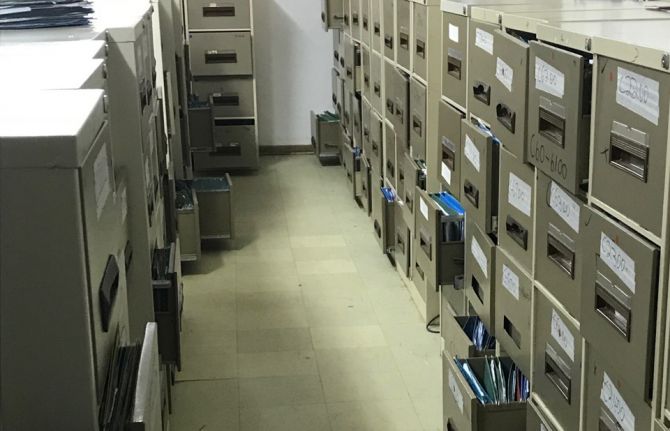
Feature Story
With UNAIDS’ support, everyone counts
28 January 2019
28 January 2019 28 January 2019For five weeks in 2018, teams of up to 10 people in each of 120 clinics and hospitals across Lesotho sifted through more than 180 000 records of people diagnosed with HIV and receiving care. The goal: to count the number of people living with HIV who were on treatment in June 2018.
During the long and dusty days, the teams attached green stickers—indicating active on treatment—or other coloured stickers—specifying that a person had defaulted, transferred or died—to nearly 80% of all patient files in the country. Facility by facility, counts of the number of people found to be active on treatment were compared to counts previously reported to the Lesotho Ministry of Health and other partners, including the United States President’s Emergency Plan for AIDS Relief. All of this to confirm that the country’s reporting adds up.
“Together with our team, we reviewed the treatment status of more than 5000 people at the Senkatana Clinic in Maseru, Lesotho, one of the oldest and busiest treatment centres in the country. After two days of reviewing the paper-based files, we found about 30% more people on treatment than the clinic had reported to the Ministry of Health in June 2018,” said Motselisi Lehloma, Ministry of Health Officer. Overall, the exercise found an underreporting to the Ministry of Health of 3% for all the 120 facilities visited.
Since early 2017, UNAIDS and other international partners have supported more than 15 countries, primarily in sub-Saharan Africa, to verify that the number of people reported currently to be on treatment is accurate. This work also supports facilities to improve the accuracy of the data reported through their health information systems by reviewing patient registries and processes for collecting, aggregating and reporting treatment numbers.
“The exercise that Lesotho undertook to audit and validate treatment numbers underscores its commitment to accurately monitor programme impact,” said Kim Marsh, Senior Adviser, Epidemiology and Monitoring, UNAIDS. Thanks to these efforts, and the efforts of many other countries in the region, UNAIDS and stakeholders can be confident in treatment numbers that allow us to monitor progress towards 90–90–90. Through debriefings with clinical staff and written reports, minor deficiencies were addressed on the spot and larger systematic issues were brought to the attention of the ministry and implementing partners in order for them to adopt necessary corrective actions.
Lesotho has one of the highest burdens of HIV in the world. In 2017, 320 000 people were living with HIV in the country, an HIV prevalence of 23.8%.

